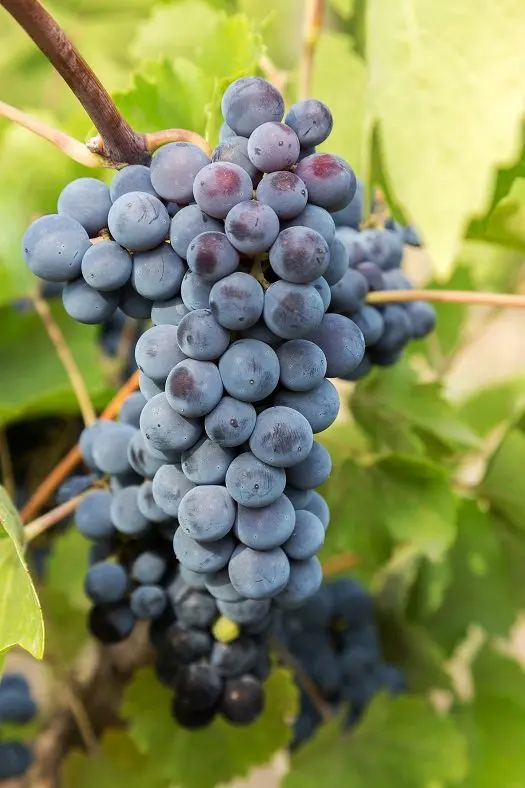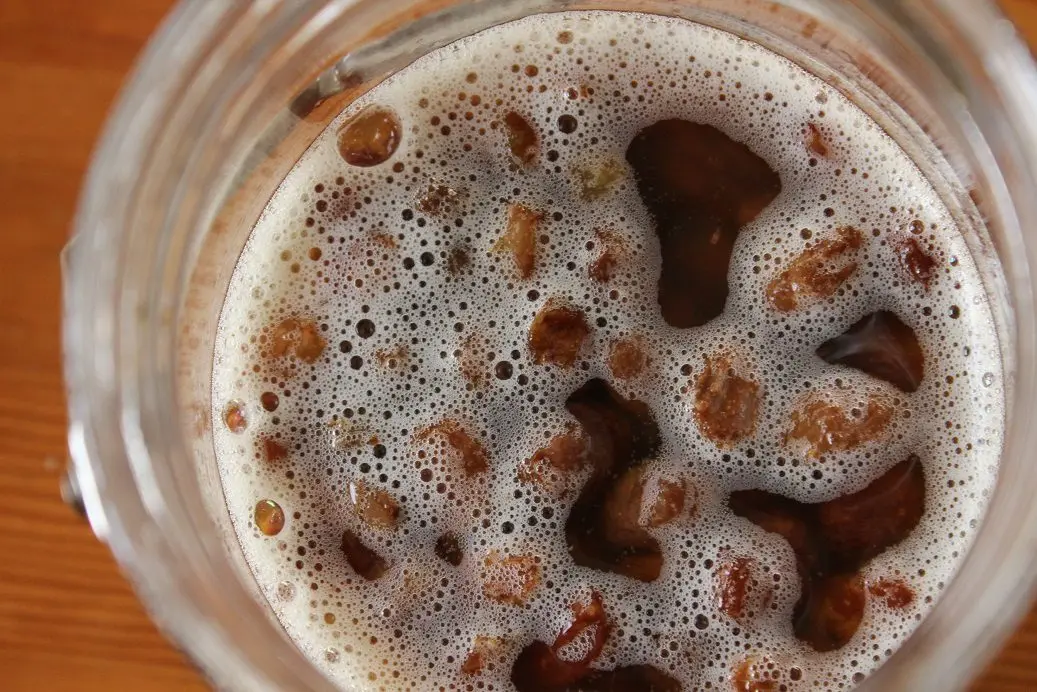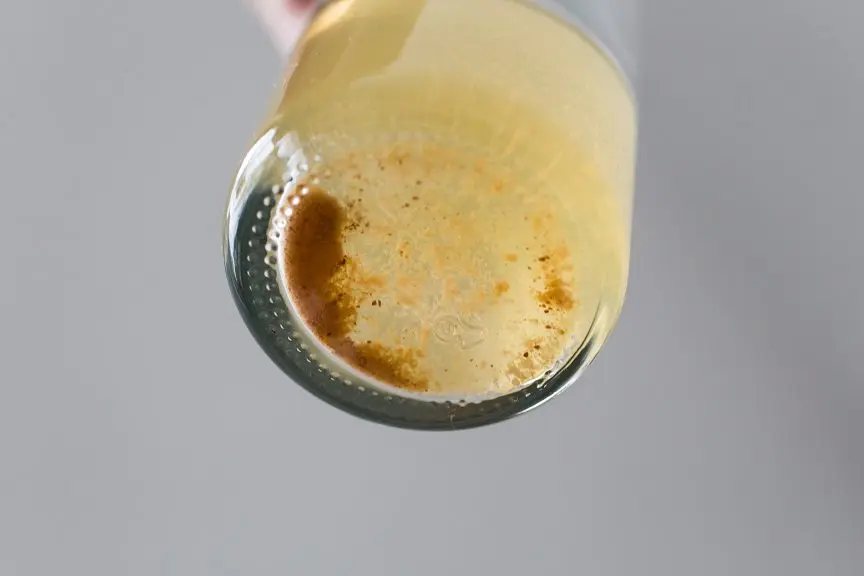Contents
For the preparation of wine and the right fruit mash, ordinary baker’s yeast is not suitable. Special strains are required, called wine strains, which not only process sugar into alcohol, but also retain the unique aroma and taste of raw materials. Wine yeast can be bought at the store or made by hand (activate the right microorganisms by creating the right conditions) from grapes or other fresh berries, raisins, fermenting must and sediment. We will consider all options.
Theory
Винные дрожжи – это микроскопические клетки дрожжевого грибка Saccharomyces ellipsoideus или Saccharomyces cerevisiae, которые живут на поверхности ягод и фруктов. Грибок легко заметить по характерному белому налету на кожице плодов.

All wine yeasts are divided into several races (species) with different properties that affect the color, aroma, taste, strength and other characteristics of the wine. For example, there are yeasts that can increase the alcohol content in wine by natural fermentation up to 16-18% (first discovered in vineyards in Spain), while other types will not give a strength of more than 12-14%.
The problem is that it is impossible to isolate and cultivate (propagate without crossing with similar fungi) a separate race of yeast at home, since special equipment and experienced specialists are required to recognize individual strains and correctly isolate cells without damaging them.
Store-bought wine yeast, created by microbiologists in the laboratory from one race of fungi, is called “cultivated”, and homemade, taken from the surface of berries or fruits, is called “wild”. In most cases, wild yeasts are made up of several strains that are collectively activated during the first hours of fermentation, but in the end, the strongest race wins and overwhelms the rest.
Normal fermentation requires 2-3% activated wine yeast (liquid) of the total must.
Homemade Wine Yeast Recipes
1. From the skin of berries (fruits)
Wild yeast lives on the surface of almost all berries and fruits, but you are most likely to find a quality strain that will give the desired strength and not impair the organoleptic properties of the wine when using grapes or raisins. Raspberries, strawberries, currants, apples and plums are also suitable.
It is better to collect berries for yeast isolation in the morning or in the evening in dry, calm weather, before that there should be no rain for at least a day. Only fruits without rot, blackening and mold are suitable (very important). In the case of raisins, I advise you to buy several varieties at once in different stores, since in our time most raisins are treated with pesticides for long-term storage, while yeast fungi die.
In addition to the raw materials, you will also need clean (without chlorine) bottled water, a couple of tablespoons of sugar and a liter jar.
Technology:
- Pour 100 grams of unwashed berries (or raisins) into a pre-sterilized liter jar. Mash fresh berries.
- Pour in 600 ml of water at a temperature of 20-35°C.
- Add 2 tablespoons of sugar (no more). Mix.
- Cover the neck of the jar with gauze. Transfer the future starter to a dark place (cover) with room temperature. Leave for 3-4 days to activate the yeast.
- When foam appears on the surface, hissing and a slight sour smell, the starter is ready for use. Shelf life – up to 10 days. To prevent souring, it is better to install a water seal or a medical glove with a hole in the finger on the jar. When introducing the starter into the wort with pulp, filtration is not required; before adding it to pure juice, it is better to filter through cheesecloth, pouring only the liquid part.

If the starter does not ferment or becomes moldy, then the berries are processed or infected with something, you will have to start all over again using other raw materials.
2. From fermenting must
This method is used when fermenting wine is available, especially if cultured wine yeasts have been used and the rasa is to be preserved.

Technology:
- Type in a half-liter jar 30-50 ml of the top layer of fermenting wine.
- Add 1,5 tablespoons of sugar and 350 ml of pure water without chlorine.
- Mix until smooth. Cover with gauze, leave for 3-4 days in a dark room at room temperature.
- After being filtered through cheesecloth, the activated homemade wine yeast is ready to be added to the must. Shelf life in a sealed container in the refrigerator is 2-3 weeks.
The remaining cake can be refilled with syrup (water and sugar in the same proportions) and a new batch of yeast can be brought out.
3. From the sediment
Wine sediment also contains the necessary fungi, thanks to which dry wine yeast can be made, the main advantage of which is long-term storage.

Technology:
- Remove the maximum liquid from the wine sediment, spread the sediment itself (about 50 grams) in a thin layer on a plate or bowl.
- Dry in the sun or on the stove, but do not heat above 35°C, otherwise the yeast will die from the heat.
- You will get a dried mass, which should be scraped off the surface of the plate (bowl).
- Готовый порошок сложить в полиэтиленовый или бумажный пакет. Хранить в темном, сухом месте до 2-х лет.
- To activate dry wine yeast, it is enough to pour the powder (one third of a teaspoon) into a jar with 300 ml of warm water (25-30°C) and 2 teaspoons of sugar. To increase the nutritional value of the medium, it is also desirable to add 2 dried fruits steamed in boiling water (dates, prunes or dried apricots). Install a water seal on the jar.
- Remove for a couple of days in a dark, warm place. When foam appears, homemade wine yeast is ready to be added to the must.










